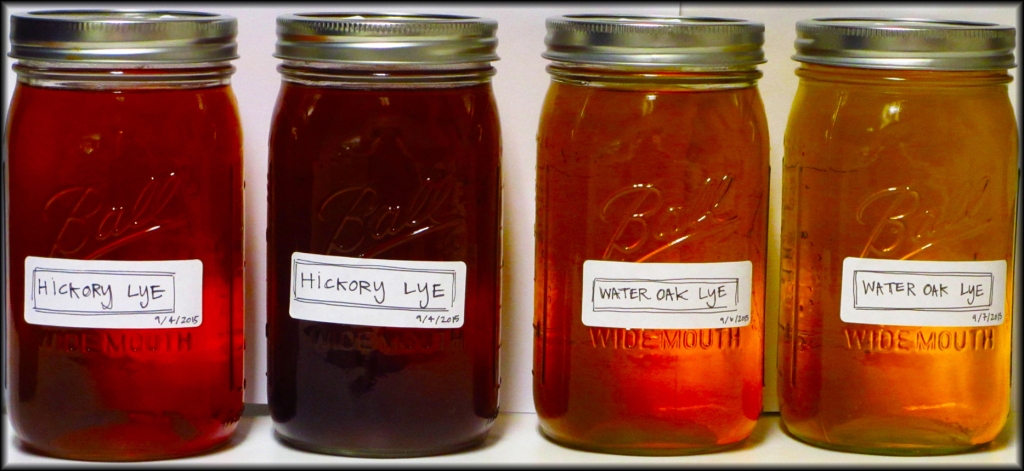
Four quarts of homemade lye made from hickory and water oak ash (separately).
A note of caution: lye is caustic, and though the first batch of woodash lye you make will not be as strong as commercial lye, it should still be respected and handled with extreme care. Properly label your materials, wear rubber gloves when handling, and always keep out of the reach of children and your pets! And if you get any one your skin, run that area under cold water until it no longer feels slippery (that slippery feeling is the lye corroding your skin!).
One of the most important ingredients for making traditional hominy is woodash lye. While both commercial lye and pickling lime can be used to remove the hulls and to nixtamalize your kernels, I think they have a subtle yet different flavor from woodash lye. I think maize that has been soaked then cooked in the latter tastes woody–that should come as no real surprise. Using either pickling lime or commercial, food grade lye creates a distinct alkaline taste, but lacks that subtle woody flavor. Continue reading →

